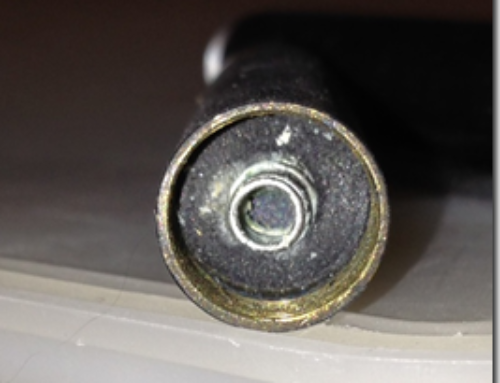I’ve had this Keithley 196 6 1/2 digit multimeter for about 25 years and it works as great today as it did when I first got it.
I usually use it on the voltage scale or the Ohms scale. On the 30 v scale, the least digit is 10 uV. When pushed to the limit, on the 300 mV scale, we can read as low as 100 nV as the last digit.
To measure resistance, the 196 DMM uses 1.6 mA as the source current and measures the voltage across the device, using a Kelvin 4 point method. With potentially as low as 100 nV as the least digit, we can measure below 1 mOhm of resistance.
My 196 has not been calibrated for years, so its absolute accuracy may not be full rated. The specs state an absolute accuracy of about +/- 3 mV on the 3 v scale. This is about 0.1% absolute accuracy.
Reference voltage sources
A simple example is to use the precision DMM to measure the DC voltage of various sources. For example, here are the specific chips, the specs and what I measured.
| Device | spec | K196 DMM |
| AD584 | 10.000 v +/- 0.030 v | 10.00051 |
| 5.000 v +/- 0.015 v | 5.00038 v | |
| 2.500 v +/- 0.0075 v | 2.49965 v | |
| 7805 | 5 v +/- 0.2 v | 5.03011 v |
| 7812 | 12 v +/- 0.5 v | 12.11763 v |
| 7912 | -12 v +/- 0.5 v | -12.12306 v |
The AD584 voltage reference is a great absolute reference. It appears to be much better than its specs would suggest. It can be an absolute voltage reference to maybe as good as 1 mV absolute value.
9 v Battery Specs
As a final interesting experiment, we happened to have 8, fresh 9 v batteries just purchased. We measured each one to 100 uV.
 Here are the values:
Here are the values:
9.6665 v
9.6525 v
9.6775 v
9.6708 v
9.6749 v
9.6586 v
9.6668 v
9.6722 v
The average is 9.6645 v with a standard deviation of +/- 0.0084 v, with is 0.087% as 1 sigma. Of course, this voltage is temperature sensitive and will change as the battery is used. However, it is interesting that the precision of at least these 8, nominally the same batteries, are within less than 10 mv of each other. A good absolute value for a fresh 9 v battery is 9.665 v.
Resistance of Copper Wire
If you use just two leads to measure a really low resistance, you usually only measure the contact resistance. This is typically on the order of 0.05 to 2 Ohms, depending on the metalization, oxide layers and the scrub you used when making contact. When using banana clip leads to a 1-inch length of 20 AWG gauge 31 mil copper wire, we measured 50 mOhms as the resistance of a section of wire, 1 inch long. This is almost all artifact of contact resistance.
If you look up the resistance of 20 AWG copper wire, it is 10.15 mOhm/foot or 0.85 mOhm/inch. This is very close to what we would expect from a simple calculation.
The series resistance of a 1 inch long length of 31 mil diameter , 20 AWG copper wire should be about
 with
with
rho = 1.7 x 10^-6 Ohm-cm
L = 2.54 cm
D = 0.079 cm (31 mils)
This results in a resistance of 0.89 mOhms for a 1 inch length of wire. This is pretty close to 0.85 mOhms, the AWG table spec, and well below the value we measure with just two wires.
 The K196 offers four important features to measure this low a resistance. First, is the use of Kelvin 4-point measurements. Two leads force the 1.6 mA and two other leads measures the low voltage generated.
The K196 offers four important features to measure this low a resistance. First, is the use of Kelvin 4-point measurements. Two leads force the 1.6 mA and two other leads measures the low voltage generated.
Second, once the leads are placed very close together, the resulting voltage can be zeroed to remove any offsets.
Third, since the voltages being measured are really small, more averaging helps. The filter setting will average 10 consecutive measurements are report the result.
Finally, using the program setting under the Ohms button, two different measurements are done in each cycle. The current force is turned off and the residual voltage measured. This is automatically subtracted off voltage measurements when the current force is turned on. This technique removes any thermal EMFs.
Using these four methods, the resistance of a 1 inch length and 2 inch length of 31 mil diameter wire were measured.
A 1-inch length of wire was measured as 0.9 mOhms. A 2-inch length of wire was measured as 1.9 mOhms.
I’d say these values are pretty close to what is expected for this wire. This is pretty close to the limit of resistance that can be measured with the K196.





